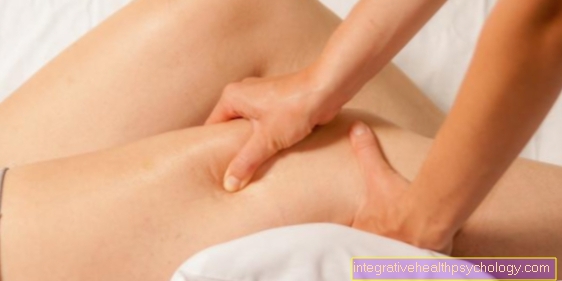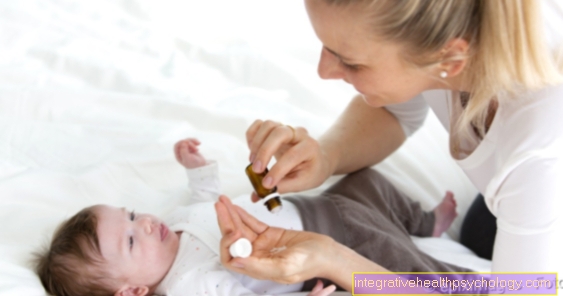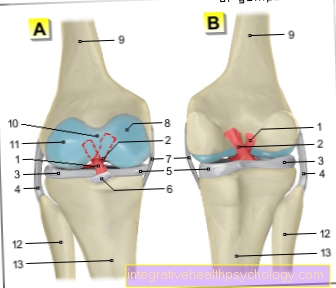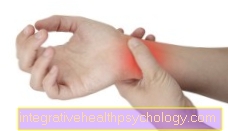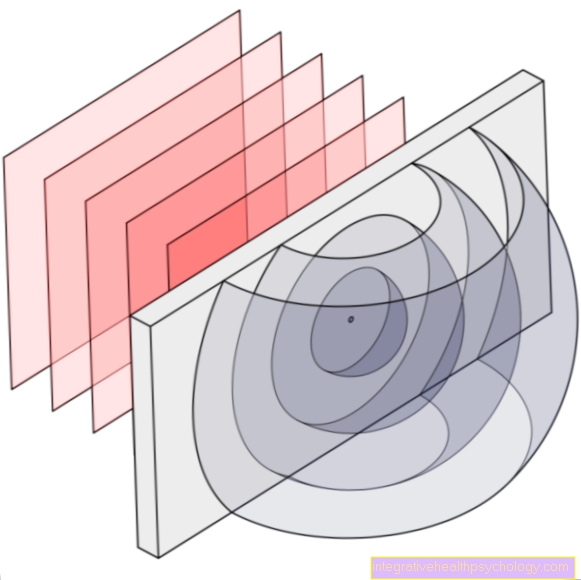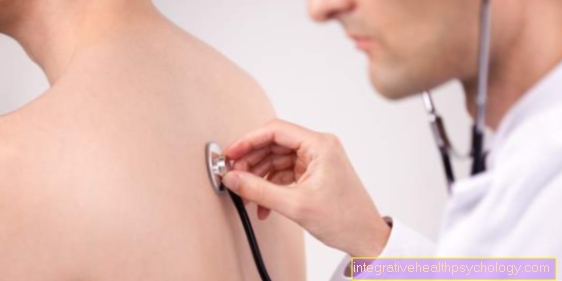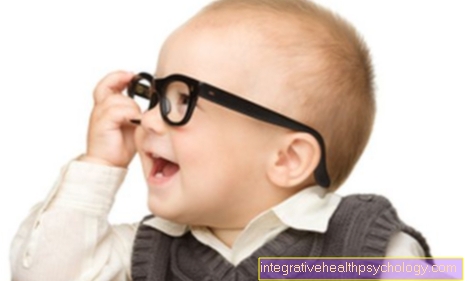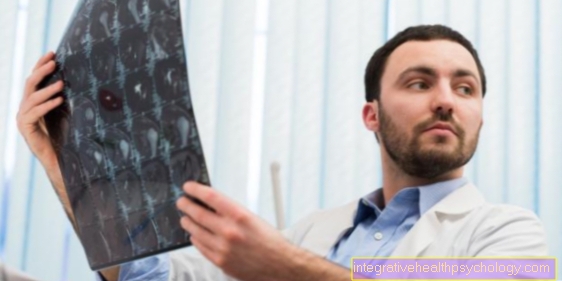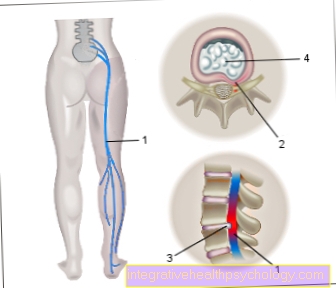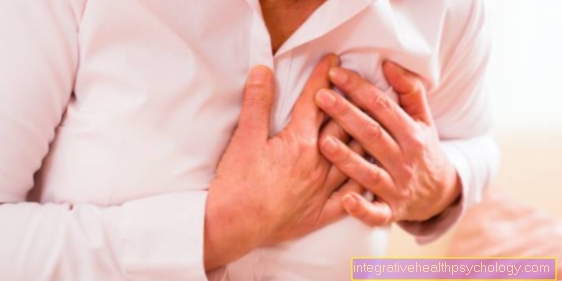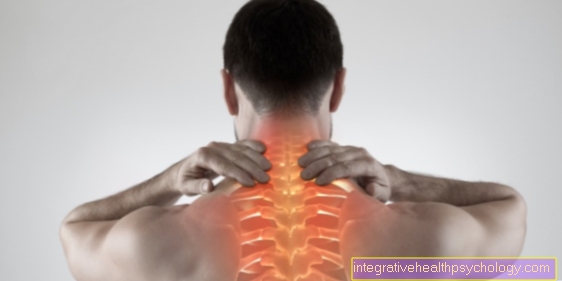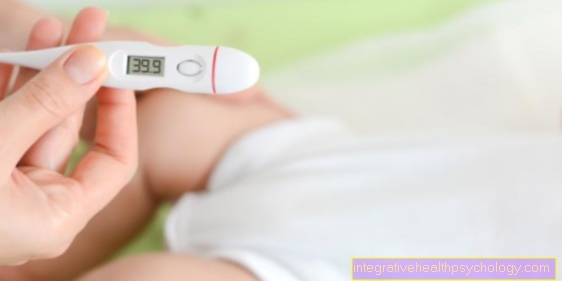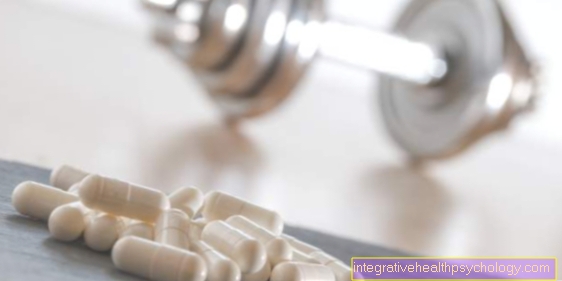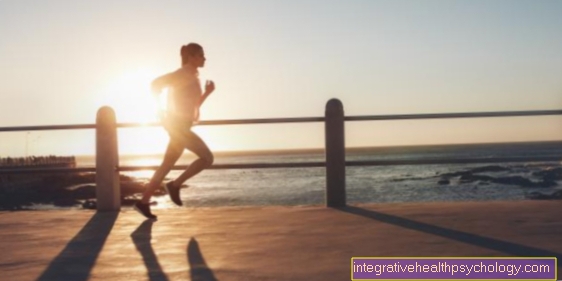Babinski reflex
introduction
The Babinski is actually an embryonic reflex that disappears after a few months and can then no longer be triggered. However, if certain damage to the central nervous system occurs, it can be triggered again and indicate this.

What is a reflex?
Reflexes are unconscious sequences of a stimulus, a transition and a reaction to this stimulus. Reflexes cannot be triggered consciously because they run through the spinal cord or the brain stem, i.e. not through the cerebrum, which controls conscious movements. So you always need a trigger, one also speaks of the adequate stimulus. However, the brain can modify and also suppress the reflexes via so-called supraspinal (coming from above the spinal cord) pathways. A well-known example of such a reflex is the patellar tendon reflex, the stimulus here being tapping the tendon with the reflex hammer.
What is the Babinski Reflex?
In the newborn, reflexes are still active, which are later "switched off", presumably these are protective reflexes. This includes the Babinski reflex, but also others such as the Galant or Mororeflex. In the course of the first few months of life, these reflexes are suppressed by the brain because they are no longer needed.
Under certain circumstances, such as paraplegia, these reflexes can become active again. With the Babinksi reflex, the toes are bent downwards by brushing the outer edge of the foot vigorously, while the big toe is stretched upwards in the opposite direction.
Causes of a positive Babinski reflex
The Babinski reflex is (with the exception of newborns / infants) a pathological reflex and should not be triggered. The reason for this is that this, like the other embryonic reflexes, is suppressed by supraspinal centers. These nerve tracts come from the motor cortex of the cerebrum, run in the pyramidal tract and are also known as the first motor neuron. The second motor neuron is the one that runs from the spinal cord to the muscle. If the first motor neuron or a previous structure in the cerebrum is damaged, the second neuron is no longer regulated and symptoms arise that are summarized under the term spasticity or spastic paralysis. In addition to the reactivation of the Babinski reflex, other symptoms such as:
-
increased muscle tension
-
increased reflexes
-
Clones (uncontrolled, rhythmic twitching)
Since these symptoms can be traced back to damage to the aforementioned pyramidal trajectory, they are also called the pyramidal trajectory signs.
There are many causes for such a spasticity with a positive Babinski reflex; basically every disease with damage to the first motor neuron leads to such a disease. Strokes are an important cause of this. However, multiple sclerosis or accidents with paraplegia can also lead to these symptoms.
Read more about the structure of the Nervous system
Diagnostics in the case of a positive Babinski reflex
A positive Babinski reflex is always a possible indication of damage to the central nervous system, for which a search for the cause should be made. Various examinations are used for this, depending on the suspected cause. In addition to neurological tests as part of a physical examination, these include CT or MRI, lumbar puncture, electromyography, electroneurography, EEG and many other examinations.
It should always be noted that a positive Babinski reflex does not prove damage to the pyramidal tract and a negative Babinski reflex does not reliably exclude this!
Concomitant symptoms with a positive Babinski reflex
A Babinski reflex occurs in the context of spastic paralysis due to damage to the pyramidal tract. The most important accompanying symptoms are therefore:
-
Paralysis with increased muscle tension
-
increased reflexes
-
jumping reflexes or widened reflex zones
-
Muscle clonus
A general statement about the treatment cannot be made. While a stroke is an acute clinical picture and requires emergency treatment, multiple sclerosis is usually not an emergency and is treated completely differently. The duration and prognosis only depend on the cause and can be found in our respective articles.
Further information:
- Reflexes
- Spasticity
- Paraplegia
- Structure of the nervous system
- Spinal cord
- Brain stem
- Cerebrum

